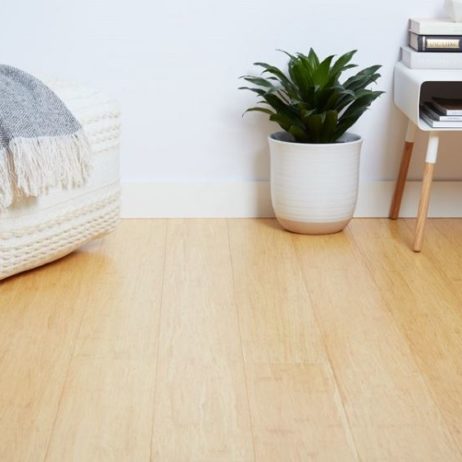
Today we will talk about bamboo floors in this article. This may seem a little strange to you if you are not sure what exactly bamboo is and how it works as a floor covering. For a variety of reasons, which we will discuss below, bamboo is becoming more popular every day. Read this article to find out what a bamboo floor covering is, and find out the advantages and disadvantages. At the end of this article you may decide that bamboo flooring is your best choice for decoration and interior design!
As the name suggests, bamboo flooring is a type of floor covering made from the bamboo plant. The most common type of bamboo used for parquet flooring is called Moso bamboo. Most bamboo flooring products come from China and other parts of Asia. Because of its physical similarity to wood, bamboo has become a popular alternative to wooden flooring.The plant itself (bamboo is a grass species) grows much faster than trees, with a five-year ripening period, making it a very renewable flooring material. (Note: It should be noted that this is a very controversial issue, as some people in the industry believe that harvesting bamboo leads to deforestation).No. Different methods of manufacturing bamboo parquet lead to different classification results, which are mainly based on economic efficiency and local preferences. In southeast Asia bamboo is cut into very thin strips and nailed to larger pieces of bamboo, leaving small gaps between the individual bamboo strands to facilitate air circulation. Smoothness and strength are not emphasized.
Conversely, the type of bamboo flooring most commonly found in North America is highly processed, including cutting, removing skin and outer knots, removing starch and sugar, drying and planing, and then laminating.

All over the world today, a lot of emphasis is placed on being “green”. Bamboo floors are a popular choice for floor coverings because of their ability to grow quickly. Therefore, bamboo parquet materials are not as scarce as many hardwoods.
Bamboo parquet is very similar to hardwood and creates natural beauty and warmth. Bamboo can be painted just like hardwood and can be applied to almost any shade or color you want. The coloring and “grain” of bamboo, which is laid in the form of a strip, can sometimes be confused with that of hardwood.
Bamboo flooring is very easy to install (although not all bamboo parquets are laminated) Individual planks are joined together and laid on the room. That’s all! Sounds simple, doesn’t it?
While traditional bamboo has a hard surface similar to red and white oak, newer construction techniques such as woven bamboo flooring increase its hardness rating even beyond oak and Brazilian cherries, which are among the hardest woods.
Bamboo is a good flooring option for climates where insects and moisture are an issue. When laid and installed correctly, a bamboo floor won’t shrink or get twisted.
It needs a lot of maintenance. Similar to wooden floors, bamboo floors need care and attention. This flooring should be kept dry, and cleaning products should be used with care so as not to damage the surface.
While bamboo parquet is always in production, some manufacturers use urea-formaldehyde as an adhesive to bond bamboo strips together. It is a highly toxic chemical, and there has been much discussion about the usage of chemicals.